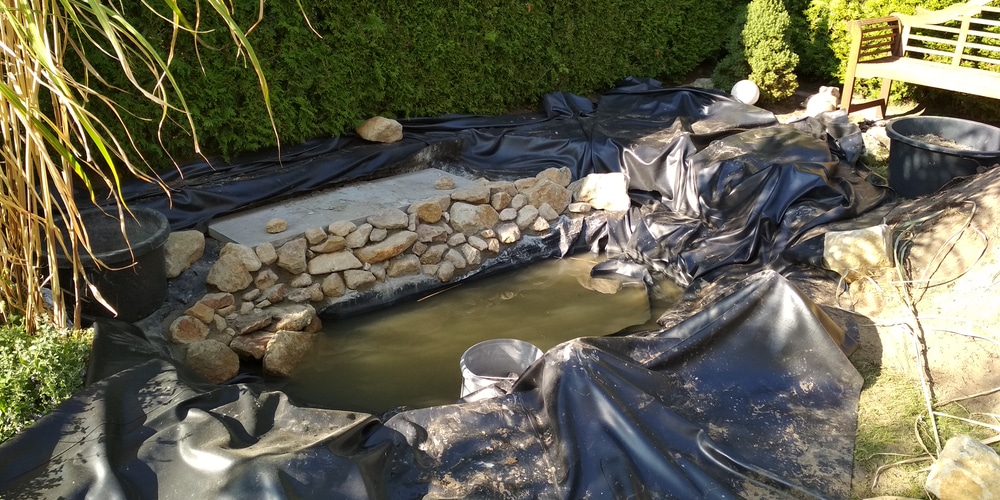There are many benefits of attracting dragonflies to your yard. They can help with insect infestations and also look beautiful. Before introducing dragonflies to your yard, you should aim to create the right environment to encourage dragonflies to stick around. It starts with a pond liner. There are three great choices for dragonflies.
Dragonflies like living in moist areas and thrive in swampy conditions. They like to be around water and hunt for small insects (such as mosquitos) that dwell around ponds. To create a dragonfly pond in your yard, you’ll need to find a suitable material to use as a lining. You could use several things as a dragonfly pond liner, and we discuss the pros and cons of each below.
1. Landscape Fabric Liner
This is probably the most commonly used liner for small ponds. Landscape fabric is inexpensive, relatively heavy-duty, and comes in rolls that are easy to work with.
However, it typically only has a lifespan of about five years before it begins to degrade from exposure to UV rays. You can get expensive chemicals meant to prevent algae growth on the fabric and extend its life, but it may be best to choose a different kind of liner to start with. The chemicals can be toxic, and they’re expensive. Some people also use a tarp as a dragonfly pond liner, and this may be a cheaper alternative.
2. Rubber Liner
Rubber pond liners are made from the same material as bouncy castles and tires, so it makes sense that they would be a good option. But rubber liners are also very expensive and potentially quite heavy. They’re relatively small in diameter, though, making them easier to work with than landscape fabric. They are also potentially more waterproof than landscape fabric.
If you’re into recycling and looking for a cheap alternative to rubber pond liners, you may like to try using a waterbed liner or material from a blow-up paddling pool.
3. Vinyl Liner
Vinyl pond liners are inexpensive, lightweight, and relatively easy to work with. They don’t typically have as many dyes as rubber liners. These liners can be very durable, and they’re flexible too, which makes them easy to install. One downside, though, is that they can fold or wrinkle if a heavy object, such as a tree branch, falls on it.
Conclusion
In most cases, either a rubber or vinyl liner is best for a dragonfly pond. Whichever you choose will depend on your budget and personal preference. If you have fish, go with rubber so that it doesn’t degrade from being exposed to the sun. You should also be aware that many fish species will eat dragonfly nymphs, so if you aim to attract dragonflies to your yard, it’s best not to add fish to the pond.
If you’re looking to recycle some old material and save money in the process, you can use something waterproof such as an old tarp, the lining from a waterbed, or a paddling pool. It’s worth noting that these materials may be less durable and won’t last as long as commercial pond liners.
